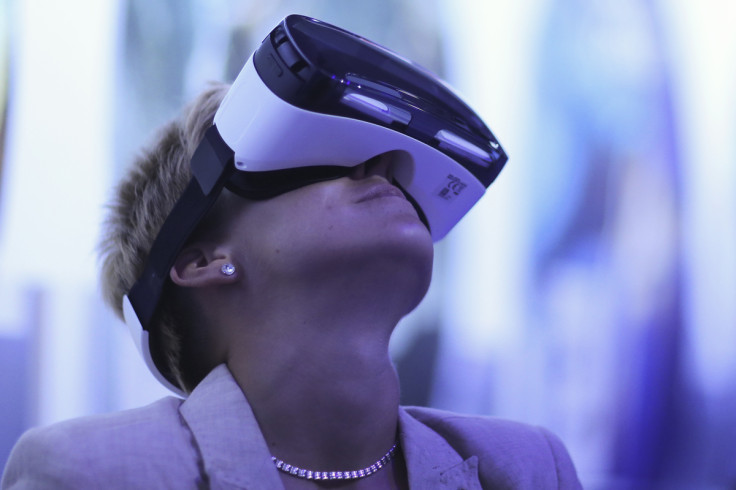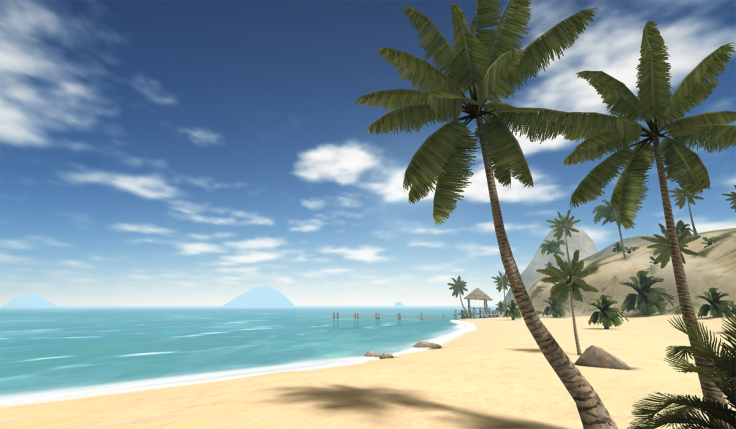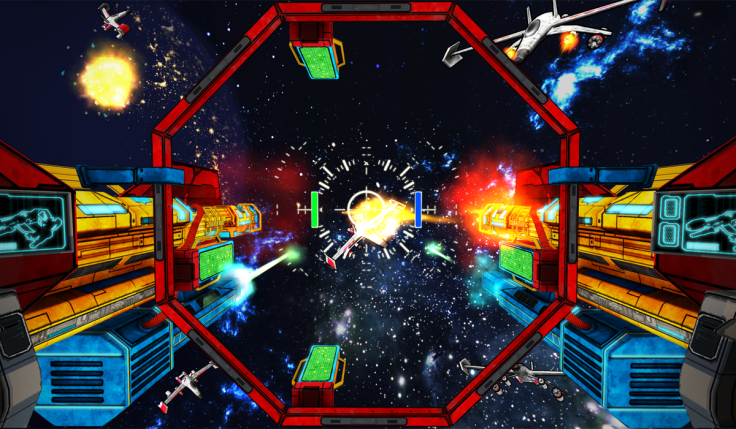Hands On: Samsung Gear VR Headset is a Slick Addition to the Virtual Reality Revolution

The Virtual Reality [VR] revolution is coming. Names like Oculus Rift, Project Morpheus, and Samsung Gear VR may only be known by those close to the tech industry for now, but in a year or two those projects, or what they become, will be household names.
At least that's the plan.
Rooted in the video game industry, virtual reality has been in the midst of a resurgence for a few years now thanks to Oculus VR - a company founded in 2012 and part-funded through Kickstarter. Their work caught the eye of an entire medium, resulting earlier this year in Facebook purchasing the company for a staggering $2bn (£1.24bn).
With that acquisition, the possibilities for what virtual reality could achieve suddenly expanded well beyond video games and into other social and practical areas. In turn this prompted Sony to reveal Project Morpheus, their own virtual reality headset for PlayStation, and Samsung to strike up a deal with Oculus.
This deal resulted in the Samsung Gear VR, a headset that subverts the field a bit by removing the need for the built-in screen that other VR headsets have, and replacing it with a phone - the Samsung Galaxy Note 4 - which simply slides in.

IBTimes UK got hands on time with the Samsung Gear VR and two demos provided by development team nDreams: Perfect Beach, a relaxing, self-explanatory application, and Gunner, a traditional video game.
I opted to try Perfect Beach first. Described as a "relaxation experience," it is a simple application that sits the user on a seafront. You can't move around the environment, but you can of course look around the 360 degree vista accompanied by natural sounds.
Users can simply sit and take in the view, play some music from a speaker by their feet, or engage in some basic relaxation techniques. There's also the ability to switch your gender and skin tone, which affects the legs you can see if you look down.
Selecting options from the menu and music player is handled by looking at them and holding your gaze for a few seconds. This extends to the headset's main menu as well, reducing the need for an additional controller - which the headset will come with, but wasn't required for the demos.
A very simple app, but one marred slightly by my inability to get the image into perfect focus. The image clarity was also not as good as one might hope for from the 1440p resolution. It is always abundantly clear that I was looking at a mobile phone screen and never once looked as clean as the images embedded in this article suggest.
By comparison, Gunner is a traditional game experience... in that you shoot a bunch of stuff. Yeah! It's a simple enough gun turret shooter set in space, reminiscent of gameplay sections used to break up action titles like Dead Space and Call of Duty. With a cel-shaded style reminiscent of Borderlands it certainly looks nice, but again I struggled to tune the focus to a satisfying degree.

As with selecting options in the menus, you shoot by looking at targets, your reticle changing colour to indicate the target has been found before unleashing shots for as long as you remain fixed on it.
Guided through a tutorial by some surprisingly good if not inspired voice acting, it's quick enough to get a handle on the mechanics. For a game that can be pretty fast paced, perhaps the best takeaway was that I didn't once feel uneasy with the movements.
Virtual reality is bound to conjure up fears among consumers that they'll feel motion sickness or get headaches using it. A large part of the years spent finely tuning the tech behind VR has been trying to make sure this happening is a rarity and not the norm.
VR is an inescapable part of the future that will branch from gaming into all walks of life, both entertaining and practical. Gamers will embrace it with open arms, as will services that can use it for training or education, but what will determine just how successful VR becomes is whether it is accepted by the public.
If the finished headsets are like the Samsung Gear VR this won't be a problem. Surprisingly light, it is a slickly designed piece of kit that's comfortable and easy to use. A touch pad mounted over your temple, as well as two other buttons used primarily for volume makes the aforementioned controller optional, and not a requirement - a blessing given that the controller has not reviewed well (there wasn't one at the event for us to try out).
My inability to focus the image properly was a concern (perhaps born out of my being short-sighted) but it was my only real worry. The other problem - a gradual drifting of the image to one side – is a programming issue not representative of the headset itself.
Virtual reality is something that needs to work perfectly for it to be accepted as the next big tech revolution. Anything less won't work, due to the nature of being immersed in what it's trying to do. From what we played, the VR juggernaut is holding a steady course.
© Copyright IBTimes 2025. All rights reserved.






















